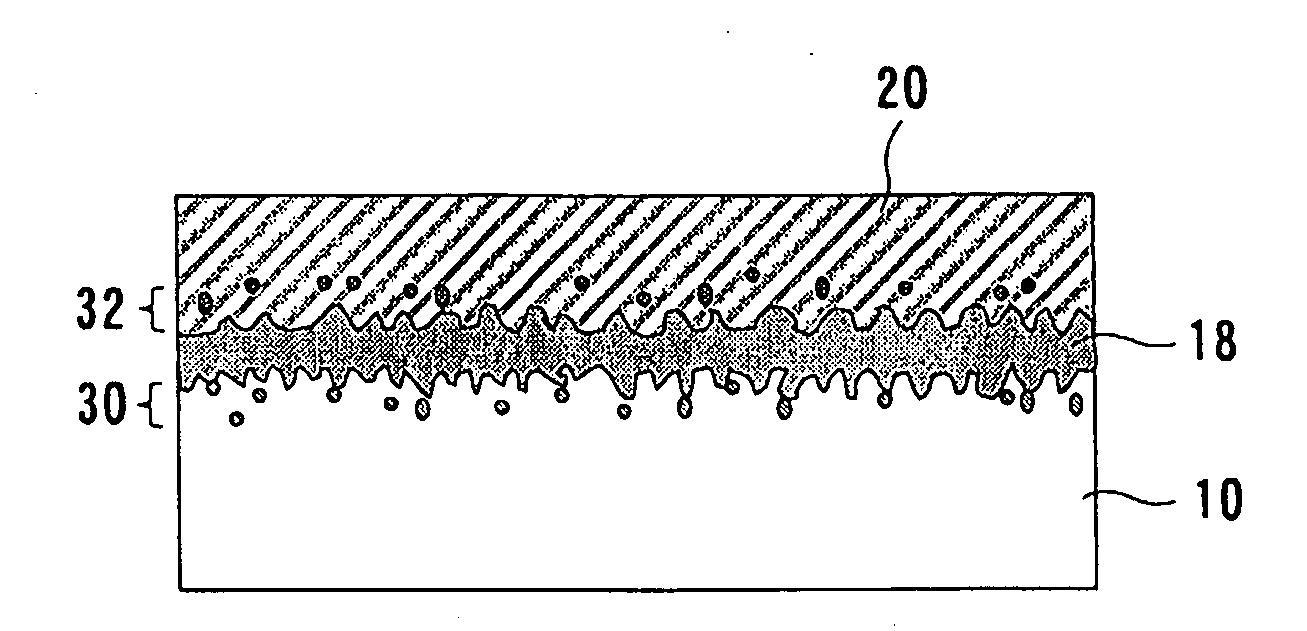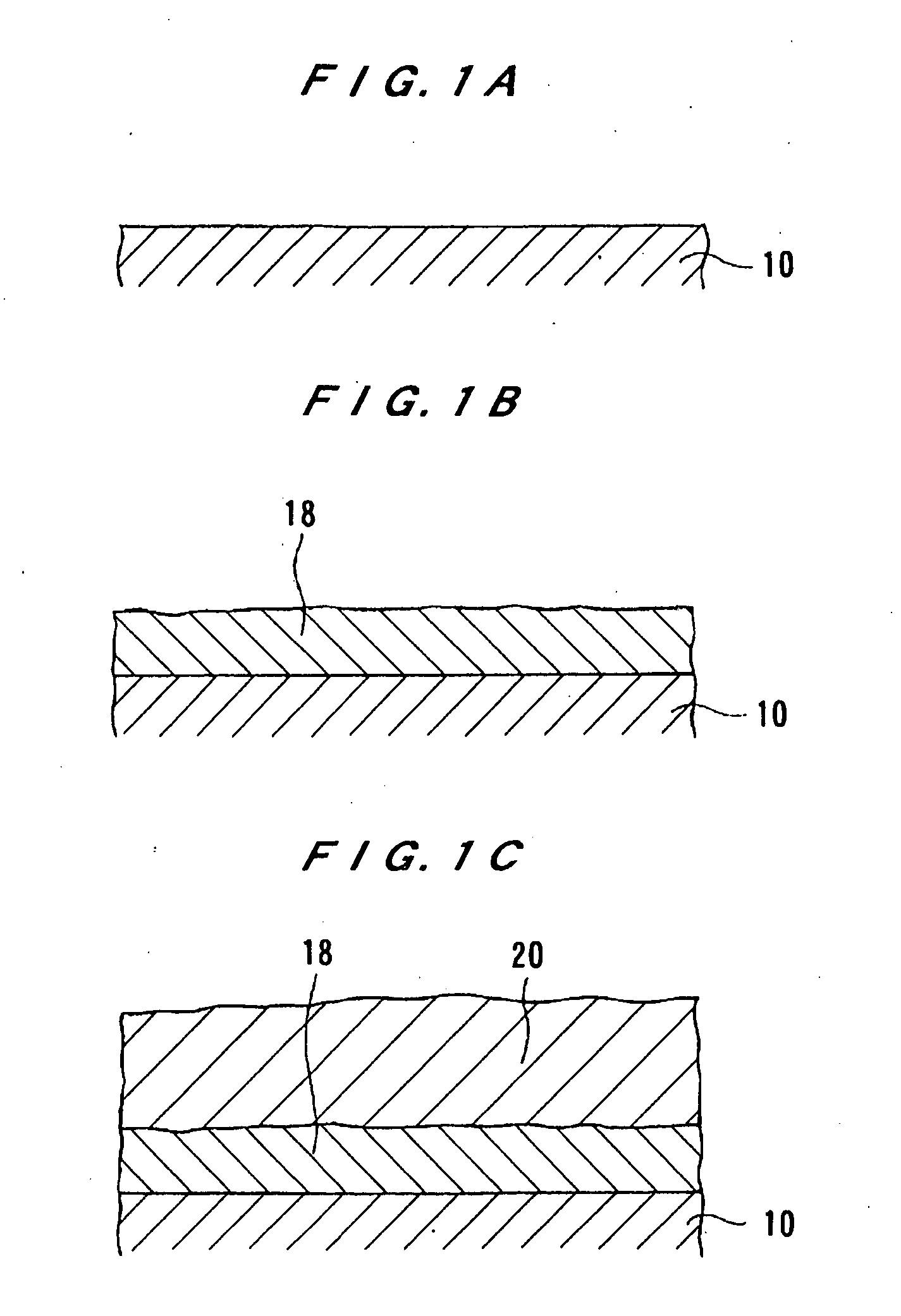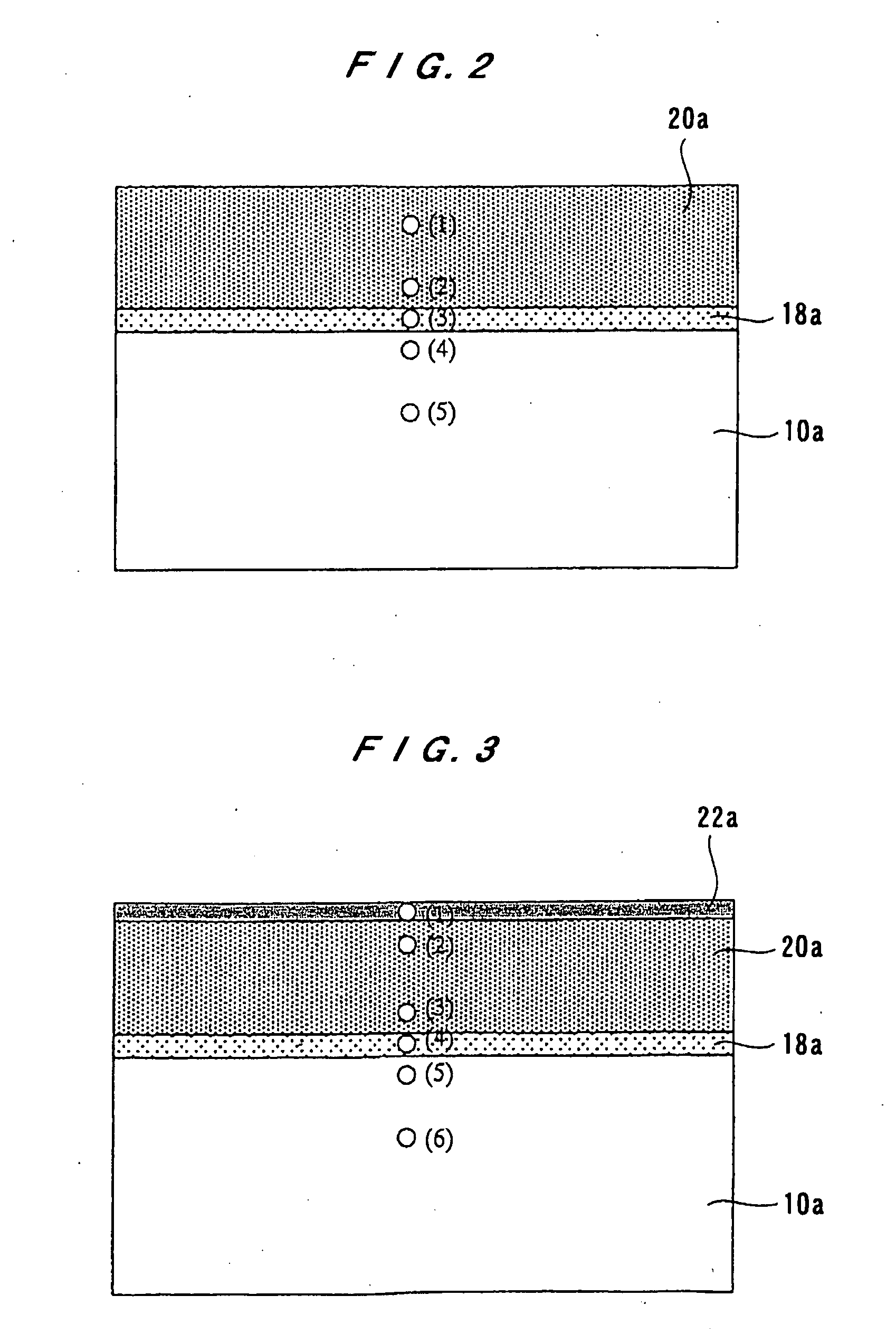Diffusion Barrier Alloy Film, Method Of Manufacturing The Same, And High-Temperature Apparatus Member
a diffusion barrier and alloy film technology, applied in the direction of pretreated surfaces, metal layered products, metal material coating processes, etc., can solve the problems of reduced mechanical strength, reduced corrosion resistance of metal bases, and difficulty in completely preventing these elements from being mixed into diffusion barrier alloy films, etc., to achieve easy formation of alloy films and extended service life of high-temperature apparatus members
- Summary
- Abstract
- Description
- Claims
- Application Information
AI Technical Summary
Benefits of technology
Problems solved by technology
Method used
Image
Examples
example
[0118]A strip specimen of an Ni-base alloy (CMSX-4) was used as a metal base. A surface of a metal base (specimen) was ground by SiC#240 and degreased for use in test. In order to process the specimen into a component having a complex shape, a process according to a combination of aqueous solution plating and diffusion was employed. First, the specimen was plated with an Re—Ni alloy at a current density of 0.1 A / cm2 for 30 minutes using an Re—Ni alloy plating bath in the form of an ammoniacal citric acid bath having the bath composition shown below. Thereafter, the specimen was plated with a W—Ni alloy at a current density of 0.1 A / cm2 for 30 minutes using a W—Ni alloy plating bath in the form of an ammoniacal citric acid bath having the bath composition shown below. Thereafter, the specimen was heat-treated in a vacuum of 10−3 Pa at 1300° C. for 10 hours. The heat-treated specimen was plated with Ni at a current density of 5 mA / cm2 for 60 minutes, using a Watts nickel bath, after w...
PUM
| Property | Measurement | Unit |
|---|---|---|
| temperature | aaaaa | aaaaa |
| surface temperature | aaaaa | aaaaa |
| thickness | aaaaa | aaaaa |
Abstract
Description
Claims
Application Information
 Login to View More
Login to View More - R&D
- Intellectual Property
- Life Sciences
- Materials
- Tech Scout
- Unparalleled Data Quality
- Higher Quality Content
- 60% Fewer Hallucinations
Browse by: Latest US Patents, China's latest patents, Technical Efficacy Thesaurus, Application Domain, Technology Topic, Popular Technical Reports.
© 2025 PatSnap. All rights reserved.Legal|Privacy policy|Modern Slavery Act Transparency Statement|Sitemap|About US| Contact US: help@patsnap.com



